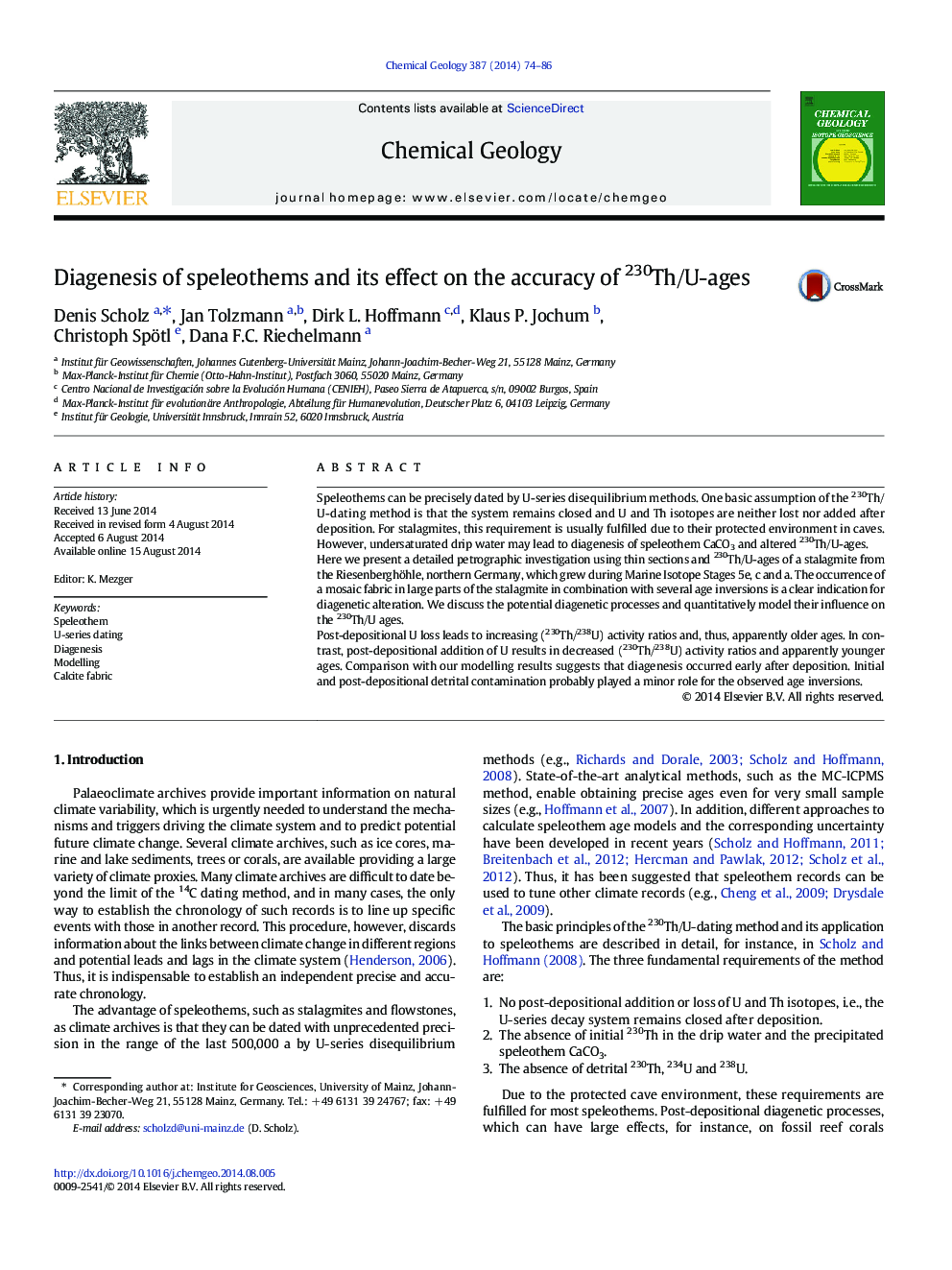| Article ID | Journal | Published Year | Pages | File Type |
|---|---|---|---|---|
| 6436567 | Chemical Geology | 2014 | 13 Pages |
â¢Mosaic fabric in a stalagmite from northern Germany indicates post-depositional diagenesisâ¢Diagenesis results in 230Th/U-age inversionsâ¢The effects can be explained and constrained with a conceptual diagenetic model
Speleothems can be precisely dated by U-series disequilibrium methods. One basic assumption of the 230Th/U-dating method is that the system remains closed and U and Th isotopes are neither lost nor added after deposition. For stalagmites, this requirement is usually fulfilled due to their protected environment in caves. However, undersaturated drip water may lead to diagenesis of speleothem CaCO3 and altered 230Th/U-ages.Here we present a detailed petrographic investigation using thin sections and 230Th/U-ages of a stalagmite from the Riesenberghöhle, northern Germany, which grew during Marine Isotope Stages 5e, c and a. The occurrence of a mosaic fabric in large parts of the stalagmite in combination with several age inversions is a clear indication for diagenetic alteration. We discuss the potential diagenetic processes and quantitatively model their influence on the 230Th/U ages.Post-depositional U loss leads to increasing (230Th/238U) activity ratios and, thus, apparently older ages. In contrast, post-depositional addition of U results in decreased (230Th/238U) activity ratios and apparently younger ages. Comparison with our modelling results suggests that diagenesis occurred early after deposition. Initial and post-depositional detrital contamination probably played a minor role for the observed age inversions.
